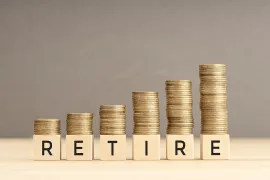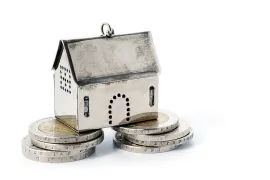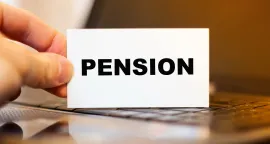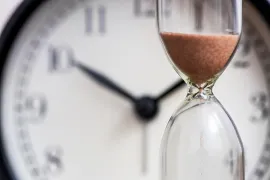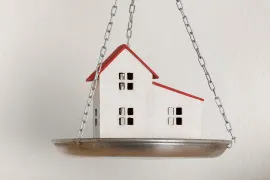Smart saving has this couple who came to Canada 30 years ago headed for a sound retirement
Tax and investment strategies could raise their retirement security even further
Arriving to Canada three decades ago, a couple we’ll call Herb, a financial analyst, and his wife Lucy, a health-care professional, both 61, have saved what they would like to think are sufficient assets to tide them through a retirement that will start at 65.
The couple has raised three children — two now in their 20s, one in his mid-30s — have a house worth $1 million and expect to receive close to full CPP and OAS benefits. They bring home $13,063 per month now and hope to achieve $8,700 per month after tax when they retire. Their concern — will some delays in saving impair reaching that goal?
Email andrew.allentuck@gmail.com for a free Family Finance analysis
The couple came to Ontario with virtually nothing, but have risen in their fields and now have a combined annual income before tax of $226,176 per year. They have a $208,000 balance on their house line of credit and a $272,000 outstanding mortgage for their $340,000 recently acquired rental property. Those debts require $36,312 per year in interest principal payments. They could erase the debts in a few years but they prefer to maintain them and, instead, donate $24,000 per year to charity.
They wonder if they have balanced living for themselves and helping others. It seems they have done well for themselves, their children, their causes and their community.
Family Finance asked Derek Moran, head of Smarter Financial Planning Ltd. in Kelowna, B.C, to work with Herb and Lucy.
“Their financial accomplishments are impressive,” he says, “but they still have a lot of debt. It is productive, but there are tax and investment questions we can address to raise their retirement security."
The balance sheet
Herb and Lucy have $59,000 of idle cash. They could use $48,834 of it to maximize Lucy’s RRSP. She would get a tax refund of 29.7 per cent, about $14,500. The remaining $10,166 cash can be used to pay down their $208,000 line of credit for their house to about $198,000. At the present paydown rate, $2,000 per month, the line of credit will be paid in full in eight years and three months.
The recent purchase of their rental unit as structured has a profit expectation of a very modest $30 per month. However, when rental mortgage interest, $476 per month, is separated from capital repayment, $550 per month, the return is $580 per month or $6,960 per year. That’s just two per cent on $340,000 market value, though 10 per cent on their $68,000 down payment. The cash return will rise as debt is reduced. However, the investment is very new and its full costs are uncertain. The actual operating margin is very small and therefore fragile, subject to repairs, tax increases and vacancy. Moreover, capital appreciation in the condo market and paydown of their mortgage will raise cash flow and could make the unit a good investment. It is premature to run the numbers, so we will leave this new but promising investment out of our forecasts.
Both will be eligible for Canada Pension Plan benefits of $850 per month. Combined, that is $20,400 per year.
They arrived in Canada at age 29 and so will have 36 of the 40 years required for full Old Age Security benefits. The present OAS benefit for 40 years of residence in Canada is $7,380 per year, so each will receive $6,642 or $13,284 total.
Lucy has a defined-benefit pension. It will pay her $1,410 per month plus a monthly $170 bridge to 65, total $1,580. If she retires at age 65, the bridge is not operative. Her target is the basic pension, $16,920 per year before tax.
Herb and Lucy have $23,700 in their TFSAs. They can add $12,000 per year in new and catch up contributions. If the sum grows at 3 per cent after inflation, then in four years when they are both 65 the TFSAs will have a balance of $76,875. That sum could support payouts of $3,800 per year for the following 30 years to their age 95.
Herb has $972,000 in his RRSPs. Lucy has $48,834 of space. She could add that from cash. Including her 29.7 per cent RRSP tax refund, their balance would then would rise to $1,020,834. If they add $27,830 over four years to their age 65 at 3 per cent after inflation, it will become $1,268,881 and then support payouts of $62,851 for the following 30 years to their age 95
Herb has stock in his company. Together with $97,000 of stock not yet vested, he has $406,000 of shares. He receives another 70 shares a year worth about $20,000. If these shares continue to be issued and grow at three per cent over the rate of inflation, then in four years they will have a value of $542,678 and then, at the same rate of return, pay $26,878 per year for the following 30 years.
The $8,700 monthly or $104,400 after-tax income target in retirement implies an annual pre-tax income of $128,000. They will beat that. The sum of income components we have calculated is $20,400 CPP, $13,284 OAS, $16,920 work pension, $62,851 RRSP, non-registered $26,878 from company shares and $3,800 TFSA cash flow. The sum, $144,133 less $3,800 TFSA income, after eligible splits and adjustment for donations, would be taxed at an average rate of 18 per cent and with TFSA cash flow restored, would provide $9,900 monthly income. That exceeds their $8,700 monthly goal.
Steady saving and focused investing can make for a quite comfortable and secure retirement income. Moreover, the couple has directed $24,000 a year to charity. They have done well for themselves and for the causes they generously support.
Financial Post
Five retirement stars * * * * * out of Five
(C) 2021 The Financial Post, Used by Permission


